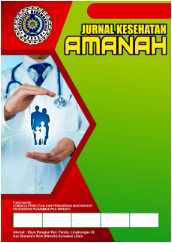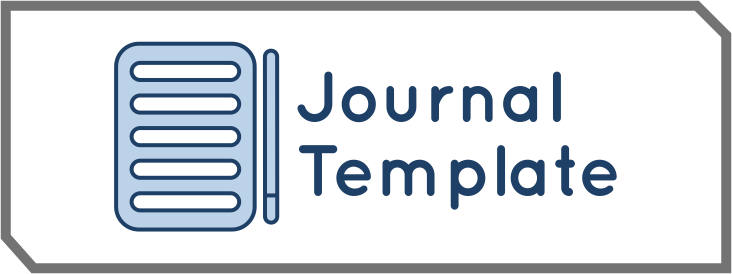Penanganan Nilai Kritis pada Pemeriksaan Ureum
DOI:
https://doi.org/10.57214/jka.v9i1.808Keywords:
critical value, handling of critical values, ureaAbstract
Critical values in an examination indicate a disorder that requires special and rapid action to improve patient safety. Urea examination is one of the laboratory parameters that functions as an indicator in assessing the level of kidney function. Urea levels are considered critical if the results exceed 100 mg/dl. This study aims to understand how to handle critical values in urea examinations. This study describes a case in the field of clinical chemistry related to critical results obtained from urea examinations. The object of the case study used in this study was a serum sample, with data showing a critical urea level of 185 mg/dl. Based on the confirmation results, this figure is in accordance with the condition of patients who have kidney failure and will undergo hemodialysis therapy. The conclusion of this study shows that handling critical values in urea examinations is carried out by identifying patient identity and ensuring good sample quality. In addition, the sample testing process must be carried out carefully and precisely, control results must be optimal, the reagents used must have the appropriate temperature and not expired, and the equipment must be properly maintained and calibrated. Finally, confirmation and reporting of results must be carried out accurately and on time.
References
Afriansya R, Sofyanita E N, & Suwarsi. (2020). Gambaran Ureum dan Kreatinin pada Pasien Penyakit Ginjal Kronik yang Menjalani Hemodialisis. Jurnal Laboratorium Medis, 2(1), 6–11.
Alsadah K, El-Masry O S, Alzahrani F, Alomar A, & Ghany A. (2019). Reporting Clinical Laboratory Critical Values: A Focus On The Recommendations Of The American College Of Pathologists. In J Ayub Med Coll Abbottabad, 31(4), 612-618.
Fahisyah R, Naim N, & Armah Z. (2019). Pengaruh Variasi Lama Penyimpanan Reagen Enzim 1a terhadap Hasil Pemeriksaan Ureum Darah. Jurnal Media Analis Kesehatan, 10(1), 21–27.
Fei Y, Zhao H, Wang W, He F, Zhong K, Yuan S, & Wang Z. (2017). National survey on current situation of critical value reporting in 973 laboratories in China. Biochemia Medica, 27(3), 1-10.
Genzen J R, & Tormey C A. (2011). Pathology consultation on reporting of critical values. American Journal of Clinical Pathology, 135(4), 505–513.
Gowda S, Desai P B, Kulkarni S S, Hull V V, Math A A K, & Vernekar S N. (2010). Markers of renal function tests. North American Journal of Medical Sciences, 2(4), 170-173.
Hartini S, & Suryani M. (2016). Uji Kualitas Serum Simpanan terhadap Kadar Kolesterol dalam Darah di Poltekkes Kemenkes Kaltim. Jurnal Ilmiah Manuntung, 2(1), 65–69.
Hasan Z, Arif M, & Bahrun U. (2017). Variasi Perlakuan Penanganan Sampel Serum dan Pengaruhnya terhadap Hasil Pemeriksaan Kreatinin Darah. JST Kesehatan, 7(1), 72–78.
Heriansyah, Humaedi A, & Widada N. (2019). Gambaran ureum dan kreatinin pada pasien gagal ginjal kronis di RSUD karawang. Binawan Student Journal, 1(1), 8–14.
Indriani V, Siswandari W, & Lestari T. (2017). Hubungan antara kadar ureum, kreatinin dan klirens kreatinin dengan proteinuria pada penderita diabetes mellitus. Pros. Semin. Nas. Pengemb. Sumber Daya Perdesaan Dan Kearifan Lokal Berkleanjutan, 7, 17–18.
Kementerian Kesehatan RI. (2022). Keputusan Menteri Kesehatan Republik Indonesia Nomor HK.01.07/Menkes/2011/2022. Standar Akreditasi Laboratorium Kesehatan. Jakarta, Indonesia: Kementerian Kesehatan.
Kementerian Kesehatan. (2015). Peraturan Menteri Kesehatan. Nomor 54 Tahun 2015. Pengujian dan/atau Kalibrasi Alat Kesehatan. Jakarta, Indonesia: Kementerian Kesehatan.
Khotimah E, & Nabila N. (2022). Analisis kesalahan pada proses pra analitik dan analitik terhadap sampel serum pasien di RSUD Budhi Asih. Jurnal Medika Utama, 3(4), 3021–3031.
Komalasari I, & Martha E. (2023). Analisis Metode Pelaporan Nilai Kritis Laboratorium pada Pasien Rawat Inap: Systematic Review. Darussalam Nutrition Journal, 7(2), 69–79.
Kustiyah, S. (2020). Kadar Ureum Sebelum dan Sesudah Hemodialisa pada Pasien Gagal Ginjal. Jurnal Laboratorium Medis, 2(2), 104–108.
Li, R., Wang, T., Gong, L., Dong, J., Xiao, N., Yang, X., Zhu, D., & Zhao, Z. (2020). Enhance the effectiveness of clinical laboratory critical values initiative notification by implementing a closed-loop system: A five-year retrospective observational study. Journal of Clinical Laboratory Analysis, 34(2), 1-10.
Piva E, & Plebani M. (2009). Interpretative Reports and Critical Values. Clinica Chimica Acta, 404(1), 52–58.
Plebani M, Sciacovelli L, Aita A, & Chiozza M L. (2014). Harmonization of pre- analytical quality indicators. In Biochemia Medica, 24 (1), 105–113.
Purnawinadi I G. (2021). Peran hemodialisi terhadap kadar kreatinin darah pasien gagal ginjal kronik . Klabat Journal of Nursing, 3(1), 28–34.
Putri D E, Indrayani A, & Wirakusumah D A. (2023). Perbandingan Kadar Ureum dan Kreatinin antara Sampel Plasma Tabung Lithium Heparin dan Tabung Serum Clot Activator. Binawan Studet Journal (BSJ), 1(6), 42–47.
Rahman M, Kaunang T, & Elim C. (2016). Hubungan antara lama menjalani hemodialisis dengan kualitas hidup pasien yang menjalani hemodialisis di Unit Hemodialisis RSUP. Prod. Dr. R. D. Kandou Manado. Jurnal E-Clinis (ECI), 4(1), 36–40.
Ramadani Q, Garini A, Nurhayati & Harianja, S H. (2019). Perbedaan Kadar Glukosa Darah Sewaktu Menggunakan Serum dan Plasma EDTA. Jurnal Kesehatan Poltekkes Palembang, 14(2), 80–84.
Rocha B C B, Alves J A R, Pinto F P D, Mendes M E, & Sumita N M. (2016). The critical value concept in clinical laboratory. Jornal Brasileiro de Patologia e Medicina Laboratorial 52(1), 17–20.
Rosita & Edy. (2020). Performance of Laboratory Critical Value on Clinical Laboratory Services in Supporting Patient Safety. Advances in Health Science Research, 33, 27–31.
Sinaga H, Prastyawati R, Tompodung R J P, Surbakti B S, & Sulistianingsih S. (2023). Ureum and Creatinine Levels of Kidney Failure Patients Pra and Post Hemodialysis in Jayapura General Hospital Papua. Jurnal Sains Dan Kesehatan, 5(4), 535–540.
Sumaida, Zein U, & Harahap J. (2022). Analisis hasil laporan kritis pemeriksaan laboratorium terhadap pelayanan kesehatan pasien di ruang rawat inap penyakit dalam di rumah sakit Telaga Bunda Bireuen tahun 2019. Jurnal Manajemen Dan Administrasi Rumah Sakit Indonesia (MARSI), 6(1), 50–56.
Suryawan, D, Arjani I, & Sudarmanto I. G. (2016). Gambaran Kadar Ureum dan Kreatinin Serum pada Pasien Gagal Ginjal Kronis yang Menjalani Terapi Hemodialisis di RSUD Sanjiwani Gianyar. Meditory, 4(2), 145–153.
Syuryani N, Arman E, & Eka Putri G. (2021). Perbedaan kadar ureum sebelum dan sesudah hemodialisa pada penderita gagal ginjal kronik. Jurnal Kesehatan Saintika Meditory, 4(2), 117–129.
Verdiansyah. (2016). Pemeriksaan Fungsi Ginjal. CDK, 43(2), 148–154.
Yuliana, R. R. (2022). Analisi hasil quality control pemeriksaan ureum dan kreatinin di laboratorium RS PKU Muhammadiyah Gamping. Naskah Publikasi.
Downloads
Published
How to Cite
Issue
Section
License
Copyright (c) 2025 Jurnal Kesehatan Amanah

This work is licensed under a Creative Commons Attribution-ShareAlike 4.0 International License.








